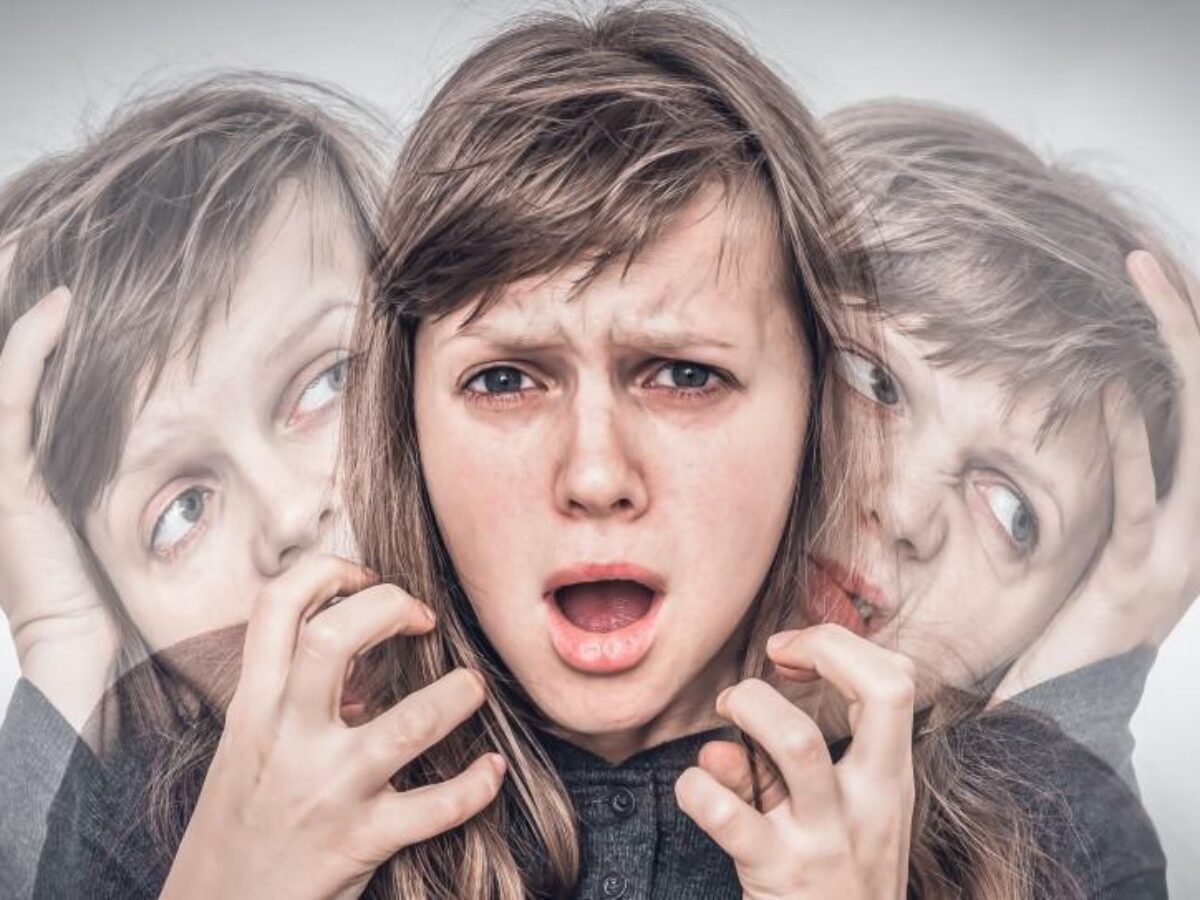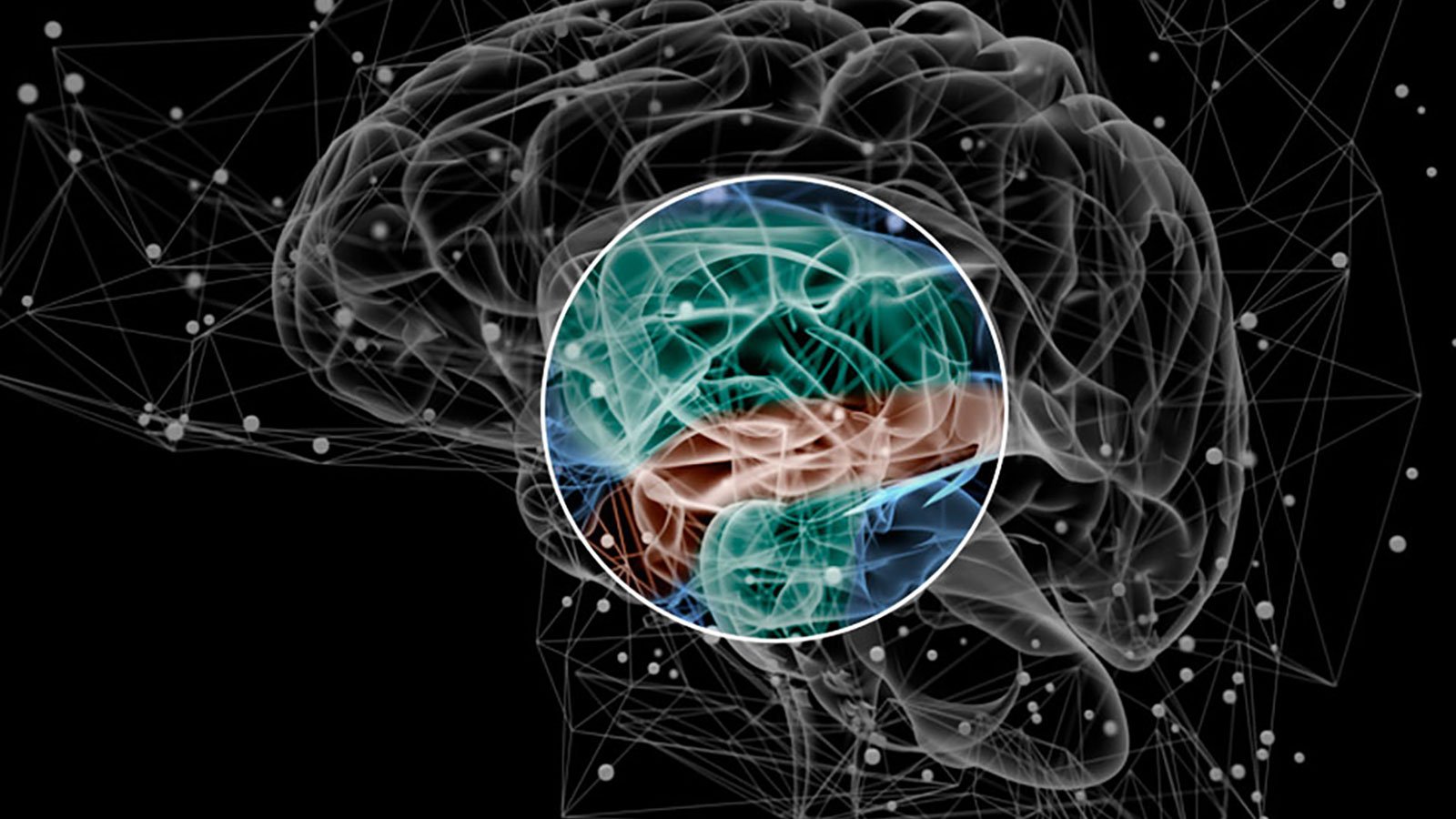Care and management of clients with schizophrenia – This book covers the entire syllabus of “Psychiatric Nursing” prescribed by the Universities of Bangladesh- for Basic and diploma nursing students. We tried to accommodate the latest information and topics. This book is an examination-friendly setup according to the teachers’ lectures and examination questions.
At the end of the book previous university questions are given. We hope in touch with the book students’ knowledge will be upgraded and flourish. The unique way of presentation may make your reading of the book a pleasurable experience.

Care and management of clients with schizophrenia
Schizophrenia:
Means splitting of psychic function
Schizo-means Split
Phrenia-means Mind
Schizophrenia is defined as a functional psychosis characterized by disturbances in thinking, emotion, volition and perception. Finally, it leads on to personality deterioration.
[Ref: S Nambi/24/87)
Or
“A group of disorders manifested by fundamental disturbances or distortions in thinking, mood and behaviour, last for at least a month of active phase symptoms like delusions, hallucinations, disorganized speech, grossly disorganized or catatonic behaviour, negative symptoms such as shallow or flat affect, alogia or avolition and incongruous mood”.
Or
[Ref: ICD 10/DSM-WI]
Acute schizophrenia may present with disturbed behaviour, marked delusions, hallucinations and disordered thinking, or with insidious social withdrawal and less obvious delusions and hallucinations.
Or
[Ref-Davidson’s/24th edition)
“Disturbance in thinking is marked by alteration of concept formation, which may lead to misinterpretation of reality, hallucinations and delusions. Mood changes include ambivalent, constricted, inappropriate emotional responsiveness, or blunted effect. Lack of empathy with others, disturbance in behaviour may be withdrawn, regressive and bizarre”.
Or
[Ref: American Psychiatric Association)
“The schizophrenic disorders are characterized in general by fundamental and characteristic distortions of thinking and perception, and by inappropriate or blunted effect. The most intimate thoughts, feelings and acts are often felt to be known or shared by others; explanatory delusions may develop, to the effect that natural or supernatural forces are at work to influence the affected individual’s thoughts and actions in ways that are often bizarre”.
[Ref: K. Lalitha/1″)
Classification of schizophrenia according to (ICD-10; Fro-F20-F29):
1. F20- Schizophrenia
2. F20.0- Paranoid Schizophrenia
3. F20.1- Hebephrenic Schizophrenia
4. F20.2- Catatonic Schizophrenia
5. F203- Undifferentiated Schizophrenia
6. F20 4- Post schizophrenic depression 7. F20.5- Residual Schizophrenia
8. F206- Simple Schizophrenia
9. F208- Other Schizophrenia
10. F209- Unspecified Schizophrenia.
[Ref: KP Neeraja/1/Vol-2/376)
Or
1. Paranoid schizophrenia
2. Hebephrenic schizophrenia (Disorganized type)
3. Catatonic schizophrenia
4. Residual schizophrenia
5. Undifferentiated schizophrenia
6. Simple schizophrenia
(Ref: S Nombi/24/90-911
Or
Classifications of schizophrenia:
8. Acute schizophrenia.
9. Chronic schizophrenia.
Another classification:
A. Positive schizophrenia (Type-1); Is characterized by acute onset, prominentdelusions /and hallucinations, normal brain structure, a good response to neuroleptics.
B. Negative schizophrenia (Type-II): Is characterized by a slow, insidious onset, a relative absence of acute symptoms, and the presence of apathy social withdrawal/lack ofmotivation, underlying brain structure abnormalities, and poor neuroleptic response
[Ref-Kumar & Clark/7/1216)
Causes of schizophrenia:
| Factors | Example |
| Influence of Neurotransmitters |
|
| Deficiency | Vitamin B1, B6, B, C |
| Genetic |
|
| Neuro developmental factors |
|
| Neuro psychological factors |
|
| Family factors |
|
| Environmental factors |
|
| Psychological factors |
|
| Social factors |
|
| Personality |
|
| Disturbances |
|
| Life events |
|
[Ref: KP Neeraja/I/Vol-2/376-377)

Risk factors:
Although the precise cause of schizophrenia isn’t known, certain factors seem to increase the risk of developing or triggering schizophrenia, including:
1. Having a family history of schizophrenia.
2. Increased immune system activation, such as from inflammation or autoimmune diseases
3. Older age of the father.
4. Some pregnancy and birth complications, such as malnutrition or exposure to toxins or viruses that may impact brain development.
5. Taking mind-altering (psychoactive or psychotropic) drugs during teen years and young adulthood
Clinical features of schizophrenia: There are four groups of symptoms
1. Positive
2. Negative
3. Cognitive
4. Other
A. Positive symptoms:
1. Delusions;
2. Hallucinations,
3. Bizarre behavior,
4. Suspicious,
5. Over activity,
6. Aggression,
7. Agitation and
8. Hostility.
B. Negative symptoms:
1. Apathy.
2. Avolition (lack of will power),
3. Social withdrawal,
4. Diminished emotional responsiveness,
5. Blunted affect,
6. Stereotyped thinking,
7. Lack of spontaneity.
C. Cognitive symptoms:
1. Memory problems,
2. Difficulty in thinking,
3. Difficulty in planning.
4. Inadequate decision making and
5. Improper judgment
6. Affective symptoms
7. Depression,
8. Guilt,
9. Anxiety and
10. Perplex emotions
D. Other symptoms:
1. Thought disturbance is the predominant disturbance in schizophrenia.
2. Persons suffering from schizophrenia will have poor personal hygiene, sleep disturbance, behavior problem like bizarre mannerisms, negativism, stupor or at times excitement,
3. Lack of insight, ie not aware that he or she is suffering from an illness. It is one of the cardinal symptoms of schizophrenia.
Or (Another Answer)
It can be categorized by following:
A. First rank symptoms
1. Audible thoughts
2. Voices arguing or discussing or both
3. Voices commenting
4. Somatic Passivity experiences
5. Thought withdrawal and other experiences of influenced thought
6. Thought broadcasting
7. Delusional perceptions
8. All other experiences involving volition made affects, and made impulses.
B. Second rank symptoms:
1. Other disorders of perception 2. Sudden delusional ideas
3. Perplexity
4. Depressive and euphoric mood changes 5. Feelings of emotional impoverishment
6. And several others as well.
[Ref: S Nambi/2/901
A. Good prognostic criteria of schizophrenia:
1. Short episode
2. Sudden onset
3. Prominent affective symptoms
4. Married
5. Paranoid type of illness
6. Good social relationship
7. Good work record
8. Good personality
9. Compliance with treatment
B. Poorprognostic criteria of schizophrenia:
1. Long episode
2. Negative symptoms
3. Insidious onset
4. Previous psychiatric illness
5. Younger age of onsetet
6. Male gender
7. Abnormal personality
8. Social isolation
9. Poor therapeutic compliance
Brain changes occur in schizophrenia:
1. Reduce size of cortical grey matter
2. Development of cerebral asymmetry
3. Enlargement of lateral and third ventricles
4. Decreased volume of brain
5. Temporal lobes become smaller
Principles of management of schizophrenia:
1. Develop therapeutic relationship with patient
2. Integrated and multidisciplinary working plan involving both primary and secondary care.
3. Give antipsychotic drugs for treatment at lowest therapeutic dose
4. Family support and interventions
5. Regular assessinent of changes and needs
6. Maintain therapeutic optimism
7. Provide cognitive behavioural therapy for psycho-social rehabilitation.
Treatment of schizophrenia:
A. Hospitalization in acute schizophrenia.
B. Acute relapses & chronic schizophrenia are usually managed in the community.
C. Antipsychotics drugs:
a. Short acting drugs:
- Chlorpromazine 100-1500 mg daily
- Trifluoperazine5-30 mg daily
- Fluphenazine 20-100 mg fortnightly.
- Haloperidol 5-30 mg daily,
b. Long acting drugs:
- Fluphenazine 20-100 mg fortnightly.
- Flupentixol 40-200 mg fortnightly.
Both are used in acute & chronic schizophrenialnie They take 2-4 wks to be maximally effective but to prevent relapse Rx should be continued for several years.
For extra-pyramidal side effect: Procyclidin 5 mg 8 hourly.
A. Electro-convulsive therapy: Upto 12 sittings.
- Catatonic schizophrenia
B. Psychological treatment:
- Cognitive behaviour therapy
- Family therapy.
C. Social treatment:
- Counselling of the relatives.
- Rehabilitation of the patient.
- Housing & employment
[Ref-Davidson’s/24th edition)

Nursing care/interventions in schizophrenia:
1. Understanding the disease and the patient:
2. First, the nurse should understand the following general principle of management of schizophrenic patients.
3. Schizophrenia is a chronic illness, hence, the maintenance of long-term treatment is essential. Total cure may not be possible in most of the cases.
4. What one should aim at is good improvement, with regular, appropriate treatment.
5. Furthermore, in times of stress, the patient may get a relapse of symptoms inspire of regular treatment.
6. A schizophrenic patient requires a substantial increase in his own self-esteem.
7. Needs to be assisted to live with the real world.
8. Needs to live in a place where he gets a change to use his own initiative and judgment.
9. Needs to have human contacts.
10. Needs to find a nurse who will be a stable and consistent model. He needs assurance as to his own personal identity. Needs patience, and forbearance.
11. Accept him as he is. That means the nurse should realize the limitations and weaknesses of the patient.
12. The nurse can minimize her own frustrations by learning not to expect the impossible from him. The patient’s condition can be made to improve, but slowly. Hence, it is the duty of the nurse to refrain from rejecting him and accepting him wholeheartedly as he is.
13. Assign small responsibilities to the patient.
14. Engage and support the Patient.
15. Supervise him in all his needs.
16. Appreciate him even if he does a small task
17. Do not
➤ Ignore
➤ Criticize
➤Exert social behavior
➤ Refrain from over-involvement.
Nursing Care of the acutely ill schizophrenics:
1. During the acute phase, the most important thing is to meet the physical need of the patient.
2. Proper nutritional care is essential since the patient may refuse food because of suspicion, indifference (negligence) or too busy or over-active that he forgets to take food.
3. So it is important to supervise the patient’s nutrition and if necessary, intravenous fluids will be given to avoid dehydration.
4. During acute state, it is important to look for any injuries sustained during excitement and these should be attended to.
5. The acutely excited patients should always be approached with the assistance of other nursing staff or attenders.
Nursing Care of the Chronic Schizophrenics:
1. Appropriate nutrition-regular diet and supervision of his diet
2. Taking care of personal hygiene-regular bath and cleanliness.
3. Elimination has to be carefully watched-attend to care of the skin because a chronic schizophrenic living in a crowded, closed place are prone to develop skin problems like scabies, eczema etc.
4. It is the responsibility of the nurse to improve his communication and also his social contacts by encouraging the relatives/friends to visit him often.
5. It is also the responsibility of the nurse to give importance to the personal identity of the patient.
6. He should be accepted as a human being and should be given responsible work in the ward set-up.
7. Patiently and positively hear the suggestions from the patient himself in implementing the routine ward work.
In the nursing care of a chronic schizophrenic, emphasis should be placed on the five “R”
➤ Reassurance
➤ Readjustment
➤ Reeducation
➤Rehabilitation
➤Recreation
Nursing care plan for schizophrenia:
| Nursing Diagnosis | Goal | Intervention | Evaluation |
| Hyper-anxiety related to unrealistic goals, repeated failures, high expectations from the caretakers | To decrease anxiety level and frustration. | Allow the client to establish trusting interpersonal relationships with fellow beings, thereby social isolation will be avoided. Staff has to use client’s language to make them to understand to avoid Advise them to producing stimuli or lessen anxiety Permit the patient to move around and talk to Others Briefly respond to the questions and clarify their doubts consistently Never pressurize the client to establish new contacts Motivate the client to participate in therapeutic activities. | Improved individual coping status |
| Altered perception related to delusions | To reduce the delusions and to promote perceptions. | Maintain and establish therapeutic nurse- patient relationship Develop positive attitude Assist the client to interact with others Show mild concern, provide support, security Involve the client in social activities Allow the client to move freely and talk effectively Assist the client in therapeutic activities Make him to understand between reality and the present behaviour Explain the client, the differences between hallucinations, illusions and its effects, if he is able to understand | Improve perception |
| Impaired communication due to perceptual deficit | To reduce frustration and conflict, Enhances socialization process. | Motivate the client to initiate conversation Develop positive attitude Encourage the client to participate in social activities Utilize communication techniques Do not provoke personalized questions, agitating questions in the beginning Never argue or criticize with the client, related to delusions Orient the client about ward routines, policies, therapeutic procedures to be carried out Talk with the client clearly, specifically Explain to the client, the reason of his behavior and the attitude. | Improved communication |
| Altered thought process which predisposes for insecurity. | Provision of secured and safe environment | Develop a sense of security, adequacy and trust feeling Provide safe and comfortable environment, therapeutic touch If it is desirable try to implement his desires into action, e.g. changing of room or close the doors, making relative to stay along with the client Avoid over-crowding in the ward by placing unnecessary furniture. | Improve the thought process |
The drugs used to reduce the symptoms of schizophrenia are known as antipsychotics.
Classification of drugs used in schizophrenia:
1. Conventional antipsychotics or first generation antipsychotics:
➤ Chlorpromazine
➤ Haloperidol
➤ Trifluperazine
2. Atypical antipsychotics or Second-generation antipsychotics
➤ Clozapine
➤ Risperidone
➤ Olanzapine
➤ Aripiprazole
➤ Zotepine
Long acting drug:
➤ Flupenthixole
➤ Haloperidol
Short acting drug:
➤ Clopixol
[Ref: S Nambi/24/9]
Family interventions in schizophrenia:
Relapse rates for schizophrenia are higher in families with high expressed emotions, hence family education is essential. Therapist teaches the techniques to significant personalities for reducing family expectations, tensions and comment and to enhance adaptation of client to family environment.
Elements of family interventions:
1. Improving communication between family members
2. Education about schizophrenia
3. Expanding family and social networks
4. Lowering the level of expressed emotions and adjusting expectations accordingly.
Effective psychosocial intervention of schizophrenia:
[Ref: KP Neeraja/1/Vol-2/380/]
1. To enhance self-esteem and to provide comfort to the client, therapist has to utilize different psychological processes and varied psychological approaches.
2. Individual psychotherapy
3. Group therapy
4. Family therapy
5. Behavior therapy
6. Milieu Therapy
7. Psycho-social Rehabilitation
➤ Social Skills Training
➤ Cognitive Therapy
➤ Prevocational Skills Training
➤ Vocational Training
[Ref: KP Neeraja/T/Vol-2/379-380/
Risk factors for suicide in schizophrenia:
1. Suffering from other psychiatric disorders along with schizophrenia
2. Depression
3. Unemployment
4. Previous history of attempted suicide
5. Social withdrawal.

Causes of catatonic schizophrenia:
1. Change in the nature of illness
2. Improvements in treatment
3. Past misdiagnosis of organic syndromes with catatonic syı..p.oms
Clinical features of catatonic schizophrenia:
1. Disturbance in voluntary movement:
- Odd Posture
- Rigidity.
2. Outburst of excitement followed by depression and stupor.
3. Waxy flexibility.
4. Catalepsy, psychological pillow. 5. Tcholalia – repeats what is said.
6. Echopraxia- repeats what is done.
7. Ambitendence, mannerism.
8. Losening of association- Irrelevant talk.
9. Neologism. (Meaningless word)
10. Automatic obedience, stereotypy.vitelná ne tu
11. Negativism, perseveration.
Management:
1. General management of schizophrenia.moet bts m
2. Drug therapy – antipsychotics.
3. ECT
4. Psychosocial therapy.
5. Cognitive therapy for rehabilitation.
[Ref: KP Neeraja/1″/Vol-2/385)
Diagnosis of paranoid schizophrenia:
From clinical features:
1. Patient lacks trust,
2. Extremely suspicious,
3. Delusions of jealousy,
4. Hypochondrical,
5. Persecution,
6. Depressive,
7 Grandiosity,
8. Ideas of reference,
9. Erotomanic,
10. Somatic delusions are marked.
11. Auditory hallucinations,
12. Disturbances of volition, speech and motor behaviour,
13. Poor interpersonal relationship,
14. Distrustful,
15. Withdrawn,
16. Argumentative,
17. Sarcastic,
18. Resentful,
19. Disturbances in associations also noticed,
20. Mood disturbances.
Management:
General management of schizophr-enia
1. Drug therapy antipsychotics
2. ECT
3. Psychosocial therapy
4. Cognitive therapy for rehabilitationsbody weat
[Ref: KP Neeraja/1″/Vol-2/386]
Diagnosis of disorganized schizophrenia:
From clinical features:
1. Early, insidious onset between 15-25 years, associated with poor morbid personality.
2. Severe disintegration of personality 3. Emotionally person will act indifferently
4. Senseless giggling
5. Silly smile
6. Inappropriate
7. Shallow laughter after little or no provocation
8. Bizarre childlike behaviour
9. Fantasy and fragmentary delusions
10. Tendency to regressт в За миноронкі
11. Enuresis
12. Encopresis
13. Self-care deficit
14. Masturbates openly
15. Marked thought disturbances
16. Incoherent, severe loosening of associations
17. Social impairment.
18. Mirror gazing.
19. Grimacing
20. Odd mannerisms
21. Disorganized speech
(Ref: KP Neeraja/P/Vel-2/385/
Problem Based Questions
Diagnosis: Schizophr-enia.
2 Differential diagnosis;
- Bipolar disorder
- Depression illness.
- Delusional disorders
Treatment plan: See Schizophre-nia.
Prognosis/Outcome of Schizophrenia:
- About one quarter of those who develop an acute schizophrenic episode have a good outcome
- One third develop chronic schizop-hrenia.
- The remainder recover after each episode but suffer relapses.
- Prophylactic treatment with antipsychotic drugs reduces the rate of relapse in the first 2 years after an episode of schizophre-nia from 70% to 40%.
- Most will not work or live independently.
- Schizophre-nia is associated with suicide, 1 in 10 patients taking their own lives.
(Ref-Davidson’x24 edition)

Diagnosis:
Schizophrenia
Points in favors of diagnosis:
- Delusion present
- Auditory hallucination present
Two atypical antipsychotic drug: See text
Advantage of atypical antipsychotic drug over classical antipsychotics; See text
Prognosis: See text.
Read more:
